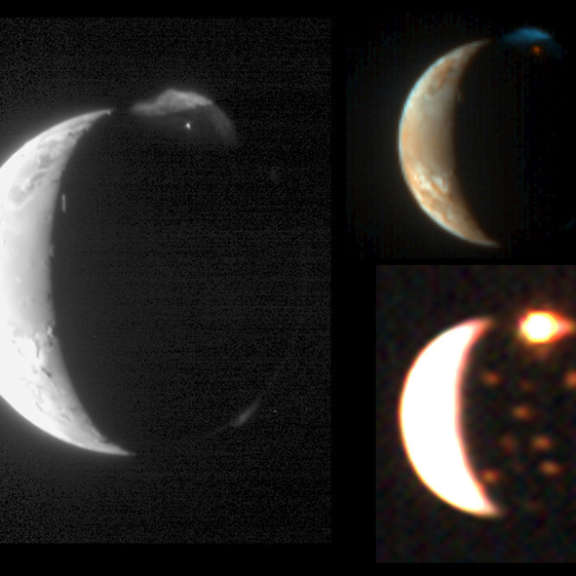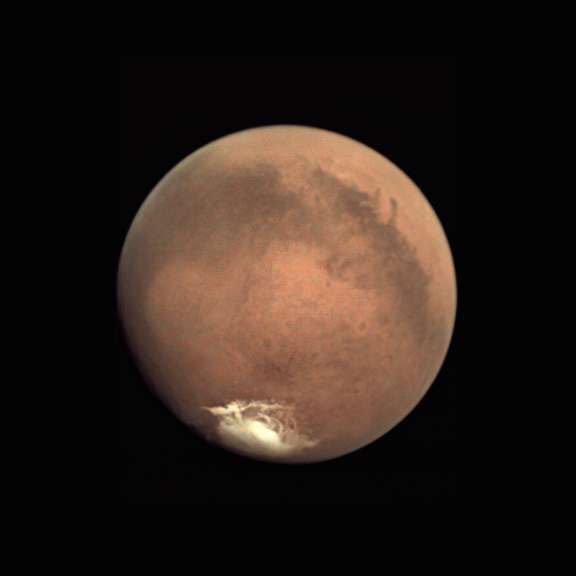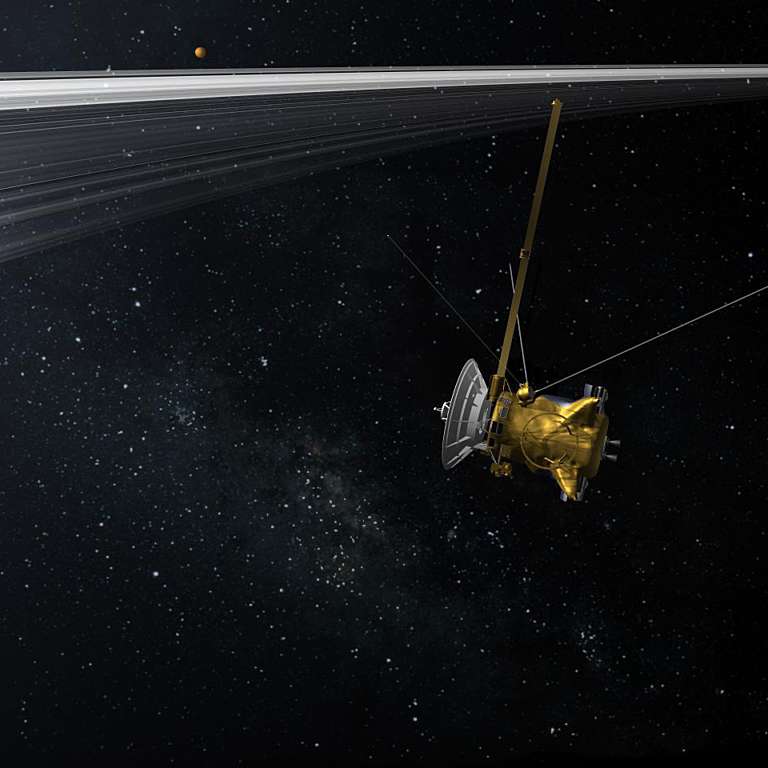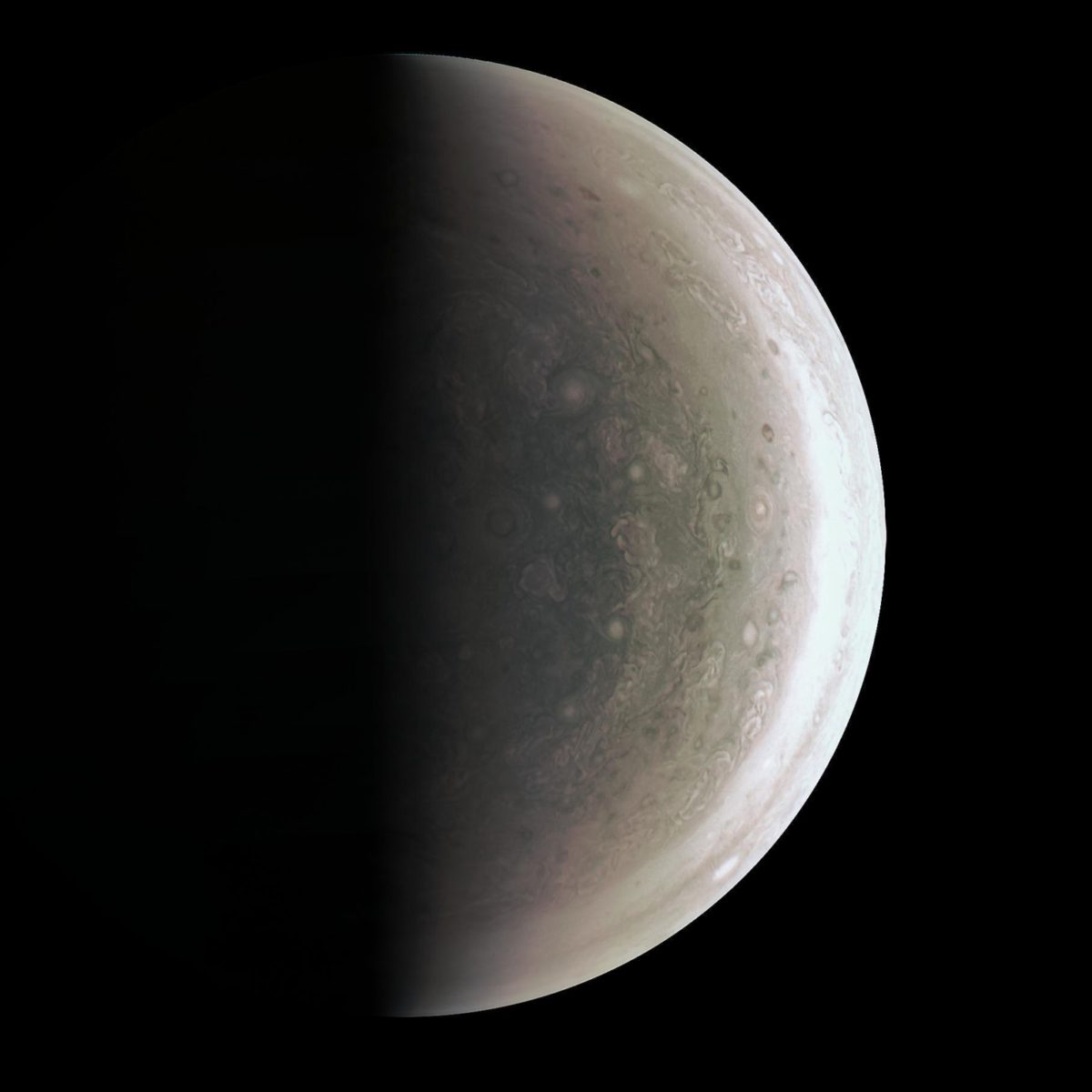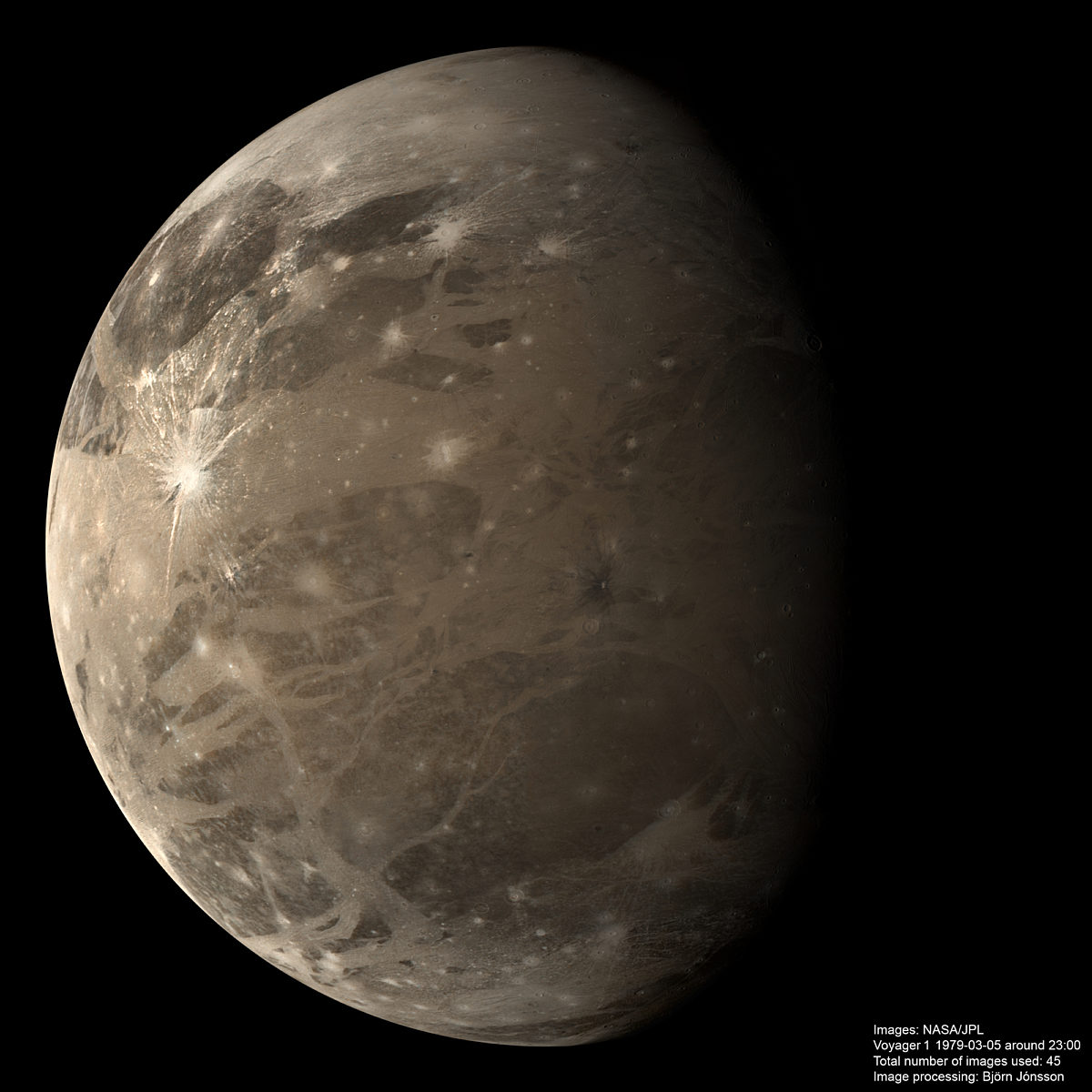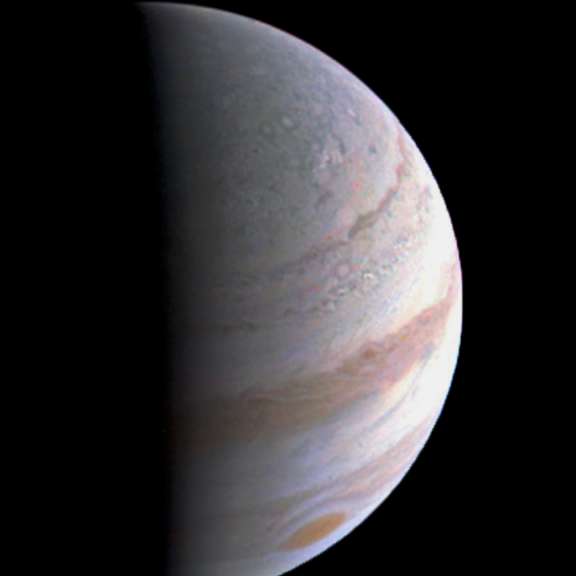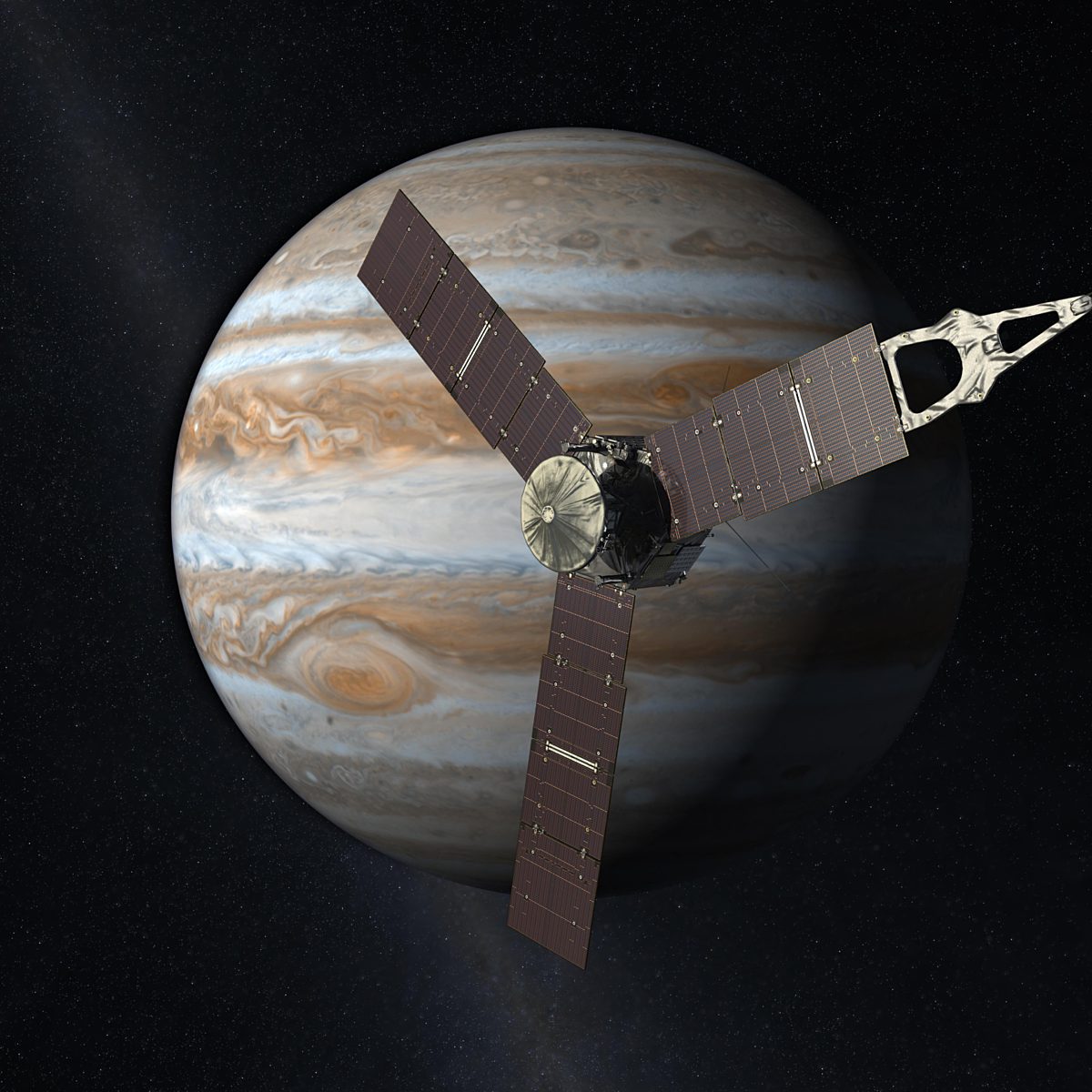All
All
Stories, updates, insights, and original analysis from The Planetary Society.
Juno meets Cassini: A new merged global map of Jupiter
The Juno spacecraft that is currently orbiting Jupiter has obtained the first good images of Jupiter's polar regions. I am presenting here a combined global map of Jupiter, made from a Cassini map I made for the equatorial and temperate regions and polar maps made from the Juno JunoCam and JIRAM polar images.
Juno's 12th perijove in lifelike color
With the help of some preprocessing of JunoCam images by Mattias Malmer, Don Davis shows us how Jupiter might have looked on April 1, 2018, if we'd been aboard Juno.
Space grade electronics: How NASA’s Juno survives near Jupiter
Take a look at how electronics of spacecraft are built to survive the harshness of space environments.
Diving into Juno JIRAM data archives
The Jovian Infrared Auroral Mapper (JIRAM) instrument can obtain images in two infrared bands. JIRAM can see the nightside of Jupiter (including the winter pole) and takes spectacular animations.
#AGU17: Spherical harmonics, gravity, and the depth of winds at Jupiter
Results from the Juno gravity science experiment presented at last week's American Geophysical Union meeting suggest Jupiter's winds penetrate only to 3000 kilometers deep.
#AGU17: JunoCam science
JunoCam may be an outreach instrument, but its superb photos of storms on Jupiter are providing plenty of data for scientists to talk about.
Brief note from #AGU17: Juno observes volcanism on Io
At the American Geophysical Union meeting, members of the Juno team showed observations of active volcanism on Jupiter's moon Io.
New treasures from Juno: Jupiter dazzles during fourth close approach
Image processor Björn Jónsson shares some of his latest stunning images of Jupiter, created using data from NASA's Juno spacecraft.
Juno just flew past Jupiter for the fifth time. What have we learned from the mission so far?
There's no verdict quite yet on the giant planet's core, and scientists are still gathering clues about the accuracy of our current solar system formation models.
Planetary discovery over the past quarter century
2016 marks the 25th anniversary of the creation of what has become one of the primary venues for the publication of research in planetary science: the Journal of Geophysical Research: Planets. This occasion is a good opportunity to look back at what we have learned in this era of expanded exploration and to try to take a peek at the future.
What's up in the solar system, November 2016 edition: Cassini takes a leap, ExoMars starts science, Long March 5 launch
Cassini is going to make a major change to its orbit, getting much close to Saturn, setting up 20
Juno to delay planned burn
The Juno mission posted a status report late Friday afternoon, indicating that they will not perform the originally planned period reduction maneuver during their next perijove (closest approach to Jupiter) on October 19. The delay changes the start date of the science mission and also all the future dates of Juno's perijoves.
What's up in the solar system, October 2016 edition: ExoMars arrives!
ExoMars Trace Gas Orbiter arrives on October 19, and it will deliver the Schiaparelli lander to its brief life on the Martian surface. Juno's headed into its science orbit, MOM has released science data, and New Horizons will finally finish downlinking Pluto flyby data.
Juno and Marble Movie update at Apojove 1
Juno is on its second of two long orbits around Jupiter, reaching apojove (its farthest distance from the planet) today.
One year remains in the Cassini mission
Cassini ends a year from today, which is sad. But the final year of the mission is going to be awesome.
Juno's instruments return riches from first perijove
On August 27, Juno soared across Jupiter's cloud tops from pole to pole, with all instruments operating. NASA posted some terrific first results from several of the instruments today. And the JunoCam team released all 28 raw images taken during the close encounter.
Will Juno’s Instruments Observe the Moons of Jupiter?
It is not easy to observe Jupiter’s moons as more than points of light with Juno, because Juno will never get very close to any of the moons, but as its orbit shifts there will be opportunities to collect data on some of the moons.
Juno's first Jupiter close approach successful; best JunoCam images yet to come
NASA announced this afternoon that Juno passed through its first perijove since entering orbit successfully, with science instruments operating all the way. This is a huge relief, given all the unknowns about the effects of Jupiter's nasty radiation environment on its brand-new orbiter.
JunoCam "Marble Movie" data available
Since a few days after entering orbit, JunoCam has been taking photos of Jupiter every fifteen minutes, accumulating a trove of data that can be assembled into a movie of the planet.
Juno’s other ‘cameras’
Juno’s science goals are to understand the origin and interior of Jupiter, focusing specifically on its atmosphere and magnetic field. Cameras can help answer some of these questions.


 Explore Worlds
Explore Worlds Find Life
Find Life Defend Earth
Defend Earth


 Sun
Sun Mercury
Mercury Venus
Venus Earth
Earth Mars
Mars Jupiter
Jupiter Saturn
Saturn Uranus
Uranus Neptune
Neptune Small Bodies
Small Bodies





